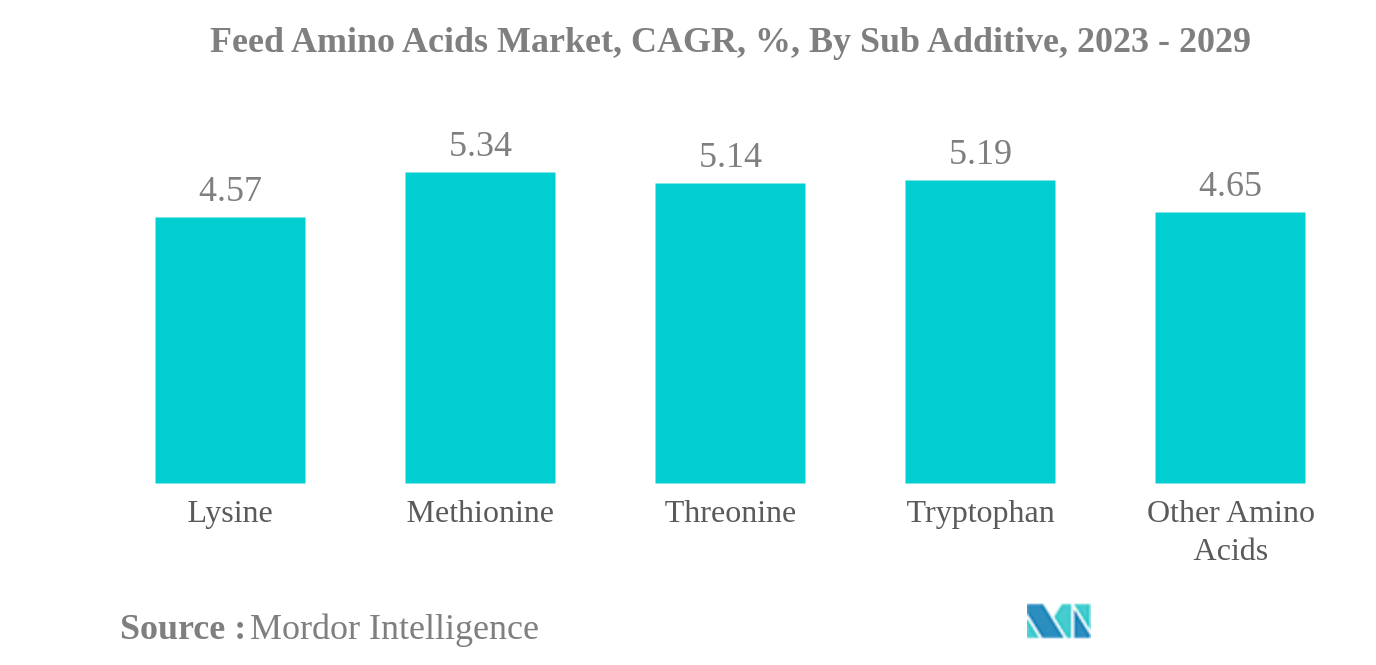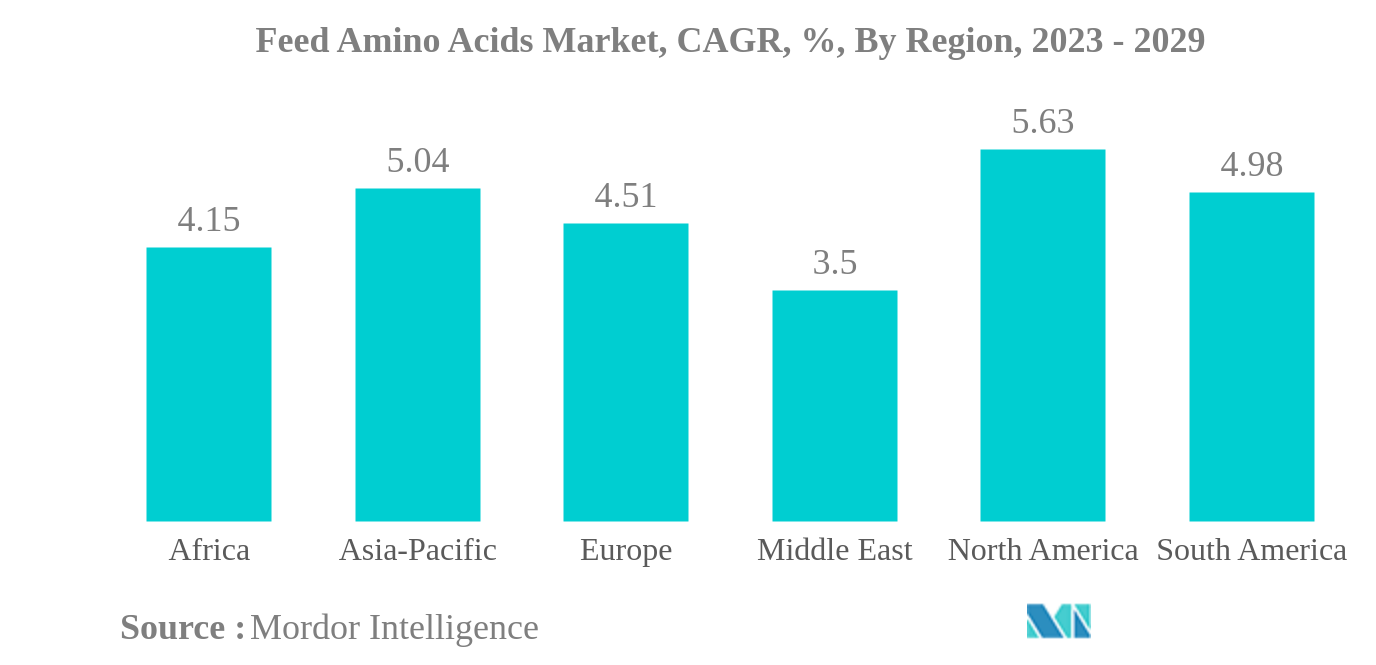Market Trends of feed amino acids Industry
This section covers the major market trends shaping the Feed Amino Acids Market according to our research experts:
Lysine is the largest Sub Additive
- The global feed additives market continues to experience significant growth, with amino acids accounting for 22.1% of the market value in 2022. As the building blocks of proteins, amino acids play a crucial role in animal health and productivity.
- Lysine emerged as the largest segment in 2022, accounting for a market share of 7.9% in the global feed additives market. This can be attributed to its ability to improve gut health and aid digestion, leading to increased animal efficiency.
- Methionine was another essential feed amino acid, accounting for USD 2.2 billion in 2022. It is in high demand due to its ability to regulate metabolic processes and improve digestive functioning and gut health. It is a key driver of increased meat productivity in animals.
- Poultry was the largest animal type in the feed amino acid market, accounting for 43.9% of the total market value in 2022. This trend is expected to continue, with a projected CAGR of 5.1% during the forecast period. The growth is driven by the increased focus on animal health, productivity, and the growing demand for meat products globally.
- Europe was the largest region in the global feed amino acids market, holding a market share of 29.2%. This can be attributed to the higher production of feed in European countries, which was about 262.9 million metric tons in 2022. The growth rate for all feed amino acid types in the region is expected to be similar during the forecast period, driven by their benefits and applications across all animal types.
- The growth is primarily driven by the benefits of feed amino acids, including improved gut health, muscle development, and egg formation. With the continued focus on animal health and productivity, the demand for feed amino acids is expected to remain strong in the future.

Asia-Pacific is the largest Region
- The global market for feed amino acids experienced significant growth, valued at USD 2.20 billion, primarily in the Asia-Pacific region. From 2017 to 2022, the market increased by more than 51.7% due to the rapidly developing livestock industry and increased regional demand for meat and meat products. The Asia-Pacific region is the fastest-growing market globally, and it is expected to register a CAGR of 5.0% during the forecast period (2023-2029).
- The high consumption of feed amino acids in 2022 was primarily due to increased livestock farming, which boosted feed production in the Asia-Pacific region. This growth was driven by major developing markets such as China, India, Australia, and Japan, with a combined total of 17.25 billion animal heads, accounting for 51.7% of the global market.
- Europe and North America are other major regions, accounting for a market share of 50.6% globally in 2022. The North American region experienced significant growth, with feed production increasing by 30.2% from 215.5 million metric tons in 2017. The United States and China accounted for the largest market shares, with 17.0% and 9.9% in 2022, respectively.
- The global market for feed amino acids is driven by the rising livestock production for the consumption of meat and dairy products and the expansion of the livestock industry. The increasing usage of dietary additives that provide health benefits to animals is expected to boost the growth of the market, registering a CAGR of 5.0% during the forecast period (2023-2029).

